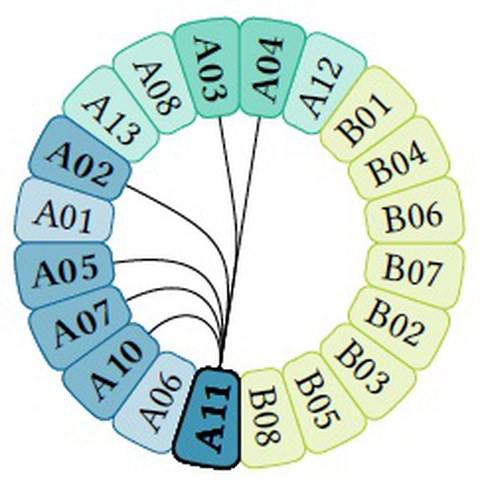Teilprojekt A11: Monolithische Photonische Transceiver für On-Board-Optische Nachrichtentechnik
Für Chip-zu-Chip Kommunikation auf einem Computerboard werden optische Transceiver entworfen. Um die hohen Datenratenanforderungen zu erfüllen, wird Datenparallelisierung angewandt, welche auf einer CMOS-kompatiblen Plattform mit optischem Wellenlängenmultiplex umgesetzt wird. Dieses bietet einen zusätzlichen Freiheitsgrad, welcher für die adaptive Einstellung des Energiebedarfs der optischen Transceiver genutzt wird. Auf Senderseite werden energie-effiziente optische Modulatoren eingesetzt, auf Empfängerseite kommen geeignete photonische Filter zum Demultiplexing der optischen Signale sowie Fotodioden auf Germaniumbasis zum Einsatz.
Rolle innerhalb des SFB 912
Projects A07 (Ellinger) and A11 exchange the results about the transceiver design. Project A11 will provide the modulator and photodiode in Phase II models to A07 (Ellinger) which will be used for the realization of high speed driver and transimpedance amplier circuits. Project A07 (Ellinger) provides the necessary information about the requirements of having more energy-ecient photonic transceivers to A11. Projects A10 (Bock) and A11 exchange information about packaging requirements which will be used for the design of the proper couplers and tapers for coupling light from/to transceivers to/from waveguides. Characterization experience developed in A05 (Plettemeier) will be used in this project to measure the performance of the designed components. Therefore, a close collaboration is planned to provide the specication of the designed components from A11 to A05 (Plettemeier) and provide the measurement results from A05 (Plettemeier) to A11. Project A11 provides the required information about the channel model and link budget to project A03 (Jorswieck), in order to be used for ecient design of network coding for the links. Also, will receive models and fundamental limits for physical layer network coding to be used for optimal design of optical links. Parameters of the photonic links will be provided to A02 (Fischer) and optimized distribution of physical optical links will be received from A02 (Fischer). Performance parameters of photonic transceivers in terms of delay, power consumption and energy e- ciency will be provided to A04 (Nagel) to be used for the simulator. Simulation results regarding the performance of the photonic transceiver components in the context of parallel applications are provided by A04 (Nagel).
Mitarbeiter
Principal Investigator
ehemalige Mitarbeiter

